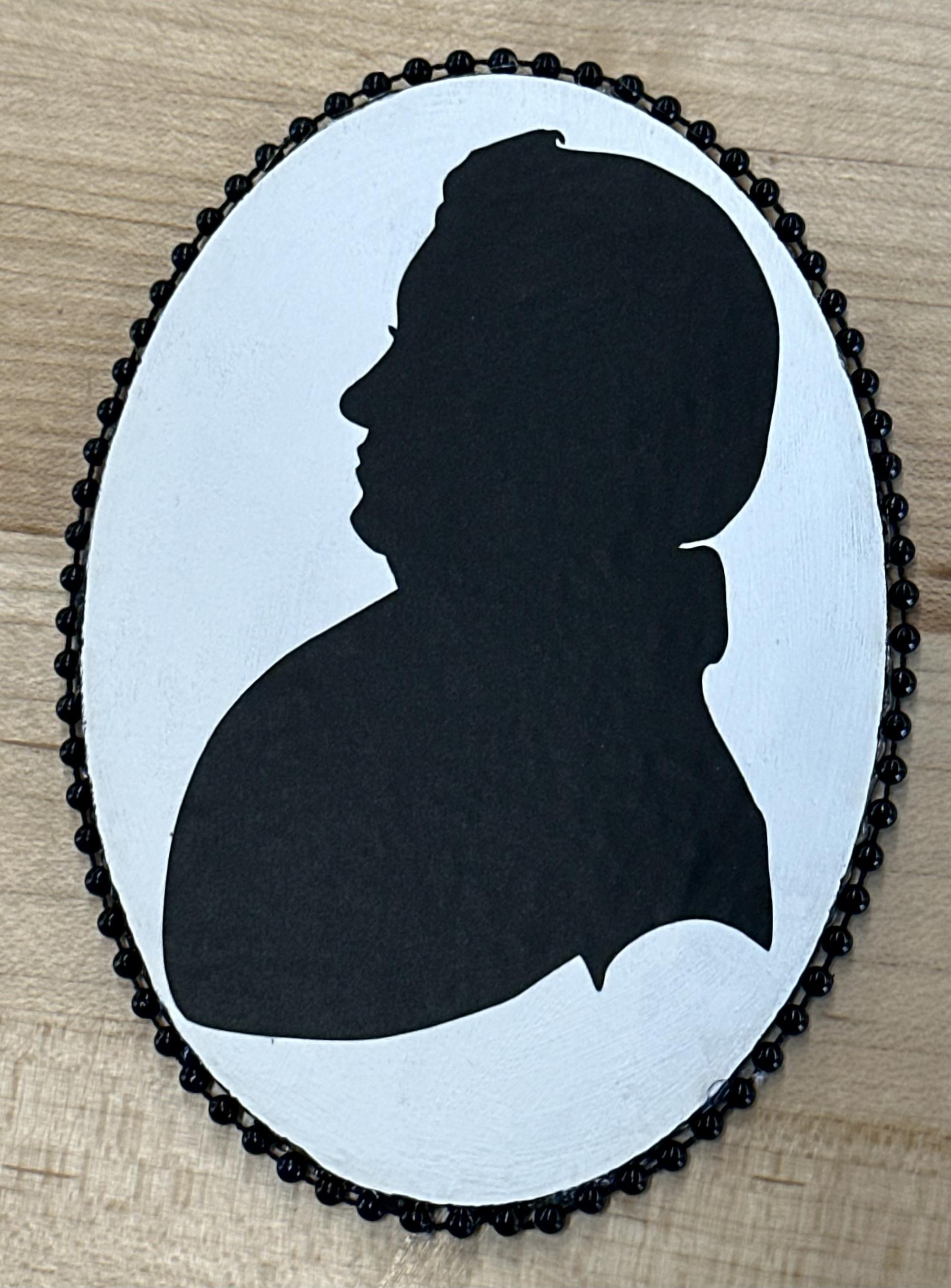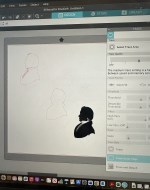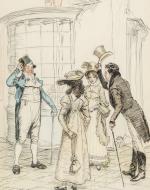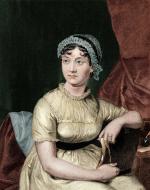Created by Alden Randall on Thu, 11/16/2023 - 19:47
Description:
This silhouette project is an exploration of the 19th-century aesthetic, bringing to life the character of Henry Crawford from Jane Austen's novel Mansfield Park (1814). The inspiration arose from Austen's early emphasis of Mr. Crawford's interesting appearance in Chapter 8. Austen notes, "For the first seven miles Miss Bertram had very little real comfort; her prospect always ended in Mr. Crawford and her sister sitting side by side full of conversation and merriment; and to see only his expressive profile as he turned with a smile to Julia." Through the art of silhouette crafting, this project captures the essence of Mr. Crawford's character, revealing his charm, wit, and enigmatic allure. My silhouette, detailed to reflect the nuances of the 19th-century artistic style, serves as a visual testament to the rich storytelling of Austen. This artistic endeavor aims to transport viewers back in time, inviting them to engage with the culture of classic literature through the unique lens of silhouette portraiture.
Silhouettes fom this era were typically dignified, capturing stoic profiles in a restrained manner. However, this project takes a departure from convention, presenting Mr. Crawford's silhouette with a touch of flamboyance that challenges the established norms of the time. This departure mirrors Mr. Crawford's own defiance of societal expectations in the novel, as he engages in affairs and runs away with a woman he is not married to. This silhouette project invites viewers to consider the intricacies of artistic expression, just as Mansfield Park urges readers to interpret the complexity of the societal norms governing the lives of its characters and author.
Silhouette of Henry Crawford, Crafted by Alden Randall, 2023. This silhouette is meant to reveal Mr. Crawford's lively personality. With a waft of hair atop his head, dramatic eyelashes, and a puffed chest, this 19th-century figure, obtained from Getty Images, achieves this goal. This disk was painted white, as a black silhouette with a white background was traditional for the early 19th century, especially for men. Although Mr. Crawford was flamboyant, he would have likely stuck to the norm in this regard, unlike a character of Mr. Tilney's gender-bending manner seen in Austen's Northanger Abbey (1818). I did, however, include a decorative beading along the outside of the disk to serve as a frame, which would be typical of any silhouette. The modest size of this silhouette (4.5" x 3.33") lends it to have several destinies. I most envision it framed on a mantle in the drawing room, among others' of the house, or displayed in the dressing room of Mr. Crawford's lover.
Photo of the process of creating Henry Crawford's Expressive Profile, Skidmore IdeaLab, photo taken by Catherine Golden, 2023. The image file of the silhouette was uploaded into Silhouette Studio, an image manipulation software, to obtain just the outline of his bust. This second image shows how the threshold values had to be adjusted to produce the smooth, unbroken trace.
Photo of the process of creating Henry Crawford's Expressive Profile, Skidmore IdeaLab, photo taken by Catherine Golden, 2023. Observing that others in the class were having difficulty working with cardstock paper, I asked Dante from the Skidmore IdeaLab if there were any alternatives the silhouette could be cut from. We landed on matte vinyl. Using the Cameo printer to cut the silhouette, the figure was obtained through the use of a pick to peel away the excess vinyl. This particular vinyl is backed with adhesive, aiding the process of overlaying the cutout onto a laser-cut oval disk (provided by Darren Prodger, IdeaLab Manager).
Hugh Thomson, "Fanny Was Obliged to Introduce Him to Mr. Crawford," for Mansfield Park (1814), by Jane Austen, 1897 edition. Mr. Crawford emerges as a pivotal figure in Austen's Mansfield Park, portrayed as a man whose charisma transcends conventional notions of handsomeness. Despite not fitting the tradional mold of attractiveness, he exudes liveliness, wit, and charm, making him a captivating presence, particularly at social gatherings. His arrival at Mansfield Park introduces romantic tension and a contrast to the more reserved Edmund Bertram and James Rushworth. Mr. Crawford's flirtatious advances and moral ambiguity contribute to the novel's exploration of societal expectations, morality, and the consequences of indulging in superficial attractions. The permeation of these societal norms in Austen's writing is intriguing given that we now know that she had a tendency to reject them herself.
Jane Austen (1775-1817), idealized engraving based on the only known portait of Austen done by her sister Cassandra Austen, White Images, Scala, Florence. Jane Austen's emphasis on marrying for love in a period marked by transactional views on marriage becomes particularly intriguing when considering her own life and the challenges faced by single women in her era. While the prevailing societal norm advocated for advantageous matches, Austen's characters, like Fanny Price in Mansfield Park, reject marriages without genuine affection, despite Mr. Crawford being doted on as a man with much more than just means. Austen, both in her novels and personal correspondence, defends the idea that being bound without love leads to profound misery.
Examining Austen's own life, her refusal of a proposal from Harris Bigg-Wither, despite the prospect of wealth and status, suggests that she adhered to her principles. Unwed herself and alone in the image above, Austen reconized the difficulties faced by single women in a society where independence was limited for genteel women. Characters like Jane Fairfax and Miss Bates exemplify the challenges faced by single women without substantial means. In a letter to her niece, she wittily noted: "Single women have a dreadful propensity for being poor - which is one very strong argument in favour of matrimony."
The rejection of advantageous matches in favor of genuine affection challenges the societal norms of the time. By presenting such dilemas, Austen not only engages readers with compelling narratives, but also challenges and critiques the societal constraints imposed on women, making her novels enduring reflections on love, marriage, and societal expectations. Considering this context, the inclusion of Henry Crawford as an enticing character rejected by Austen's heroine holding out for true love takes on added significance.






